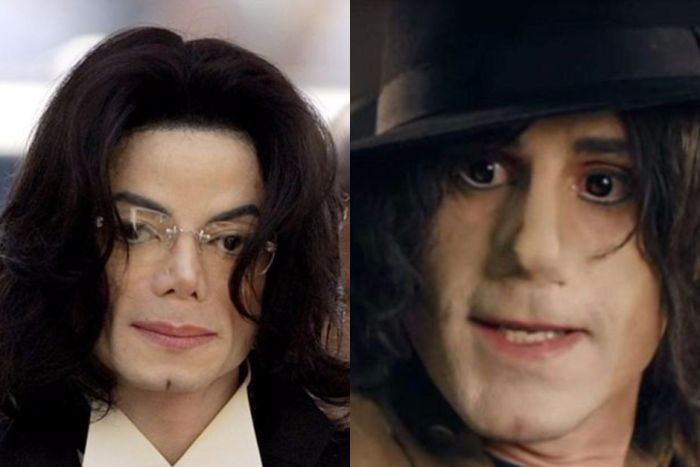Louise Brown doesn’t mind if you call her a test-tube baby, “but I prefer IVF – since there weren’t any test tubes involved,” she says with a laugh, gesturing to the large glass jar in which she started her life.
That jar is now displayed at the Science Museum in London, because — exactly forty years ago Wednesday — Louise Brown became the first person to be born after being conceived outside of the human body, through in vitro fertilization (IVF). Her embryo was taken from the jar — called a “desiccator” — and transferred into her mother Lesley’s womb.
Nine months later, Louise arrived, and so did the world’s media. Hordes of reporters, representing outlets from the U.S. to Japan, descended on the small southwestern English town of Oldham, determined to bear witness to what TIME then called “the most awaited birth in perhaps 2,000 years.”
The mood before the birth was tense. British scientist Robert Edwards and his gynecologist colleague Patrick Steptoe had been working toward it for more than a decade. Edwards had first fertilized an egg outside the womb in 1969, later calling in Steptoe to help him refine the technique for people. The pair had attempted implantation in 282 women. Five had become clinically pregnant but none had so far given birth to a live baby. Alongside Jean Purdy, the world’s first embryologist and an essential but often forgotten member of the team, Edwards and Steptoe worked under secretive conditions, owing to intense competition between fertility researchers and opposition from religious groups and the public.
When the big day came, doctors filmed the caesarean section in order to capture Lesley’s damaged Fallopian tubes and prove to the public that Steptoe and Edwards’ claims were not a hoax. Some were critical of Lesley and her husband John for making their daughter’s birth so public. “By turning the birth of their child into a media event, the Browns have […] degraded and institutionalized the child, and for that act, not for their act of medically assisted birth, the Browns should be viewed as symbols of the degeneration of Western morals,” TIME reader Grant Parsons of Ann Arbor, Mich., wrote in after the magazine reported the news of Louise’s birth.
“My parents didn’t have a choice about making it public,” Brown tells TIME. “If they didn’t, they would have had people asking ‘Why can’t we see her? What’s wrong with her?’” Steptoe and Edwards needed the birth to be public, Brown says. “Had there been anything at all wrong with me, it would have been the end of IVF.”
Brown says that, though her mother was a private person, “she would have done anything” for Steptoe and Edwards because she was so grateful.
“Not long before mum passed away, she said that without IVF she wouldn’t have anybody left in the world,” says Brown. “Even up to her last days she was proud of who she was and what she did.”
The medical pioneers later became like Louise’s grandparents – when she got pregnant with her first child, she wrote to Bob to tell him before anyone else. She now lives a “very normal life” in southwestern England, working for a freight company in Bristol and living with her husband and two sons.
Many were jubilant about the first successful IVF birth. Stuart Kunkler from Columbus, Ohio, wrote to the magazine that it would be “a glorious day for women afflicted with the type of sterility Mrs. Brown has overcome,” while Margaret Wood Milan from New Hampshire wrote that, as with abortion rights, the arrival of IVF was a boon for those who share “the same basic belief: that parenthood should be a matter of choice.”
Others were terrified of what Louise would mean for humanity. Religious groups were opposed to the idea of “playing God” with reproduction, and to a process in the course of which many embryos often died. But even secular society found the idea alarming. Newspapers and readers made regular comparisons to Aldous Huxley’s 1934 novel Brave New World, in which natural sexual reproduction is banned and humans are grown in labs through a process similar to what happened before the embryo was placed inside Lesley’s womb. “We’re on a slippery slope,” British Geneticist Robert J. Berry told TIME in 1978. “Western society is built around the family; once you divorce sex from procreation, what happens to the family?”
So far, the family seems to have done all right.
In the years after Louise Brown’s birth, the number of women undergoing IVF grew slowly, with the first baby born through the treatment in the U.S. in 1981. The 40th IVF baby, born in 1982, was Louise’s sister Natalie.
Now, some 6 million babies worldwide have been born through IVF, according to the Science Museum. Debate still rages on over who should have access to the treatment and who should pay for it — the average cycle costs $12,000 in the U.S. and success rates vary between around 40% and 2% depending on a woman’s age. But the number of babies born through IVF goes up every year in the U.S., with more than 70,000 in 2016.
Brown says she was “shielded” from negative reactions to IVF growing up, despite her parents receiving thousands of letters. Now, the response is mostly positive.
“A few months ago I was in the supermarket with my husband and sons and I heard footsteps running up behind me,” she says. “It was a woman and she had a 4 year-old — the same age as my son — and a tiny baby in a pram. She said that she’d always wanted to thank my mum and me because without us she’d never have had those two. It makes you tear up.”













